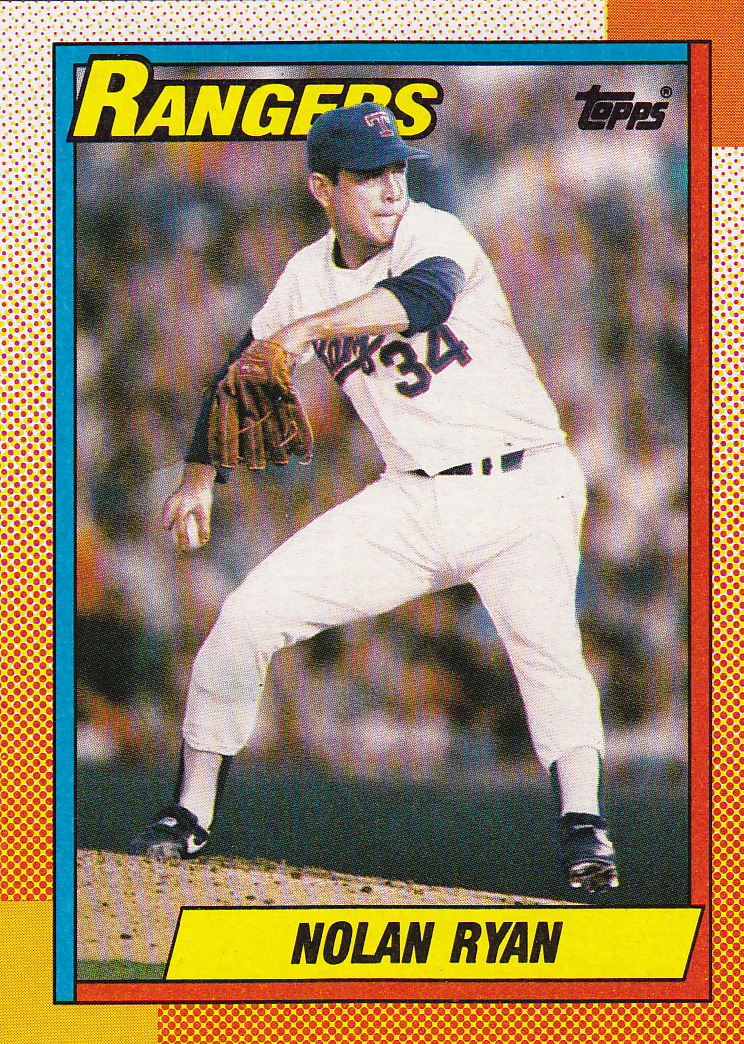When you think of baseball cards, images of bustling card shops and raucous trading sessions may spring to mind. However, the world of vintage baseball cards has evolved into a veritable treasure trove, not just a nostalgic pastime. Among the bustling aisles of card shows and the expansive realm of online marketplaces, one particular set has sparked curiosity among collectors and casual enthusiasts alike—the 1990 Topps baseball cards. Are they mere artifacts of a bygone era, or do they hold latent value, waiting to be uncovered?
At first glance, the 1990 Topps set may seem overshadowed by its illustrious predecessors. After all, cards from the 1980s have notoriously garnered higher prices, thanks largely to a combination of player fame and scarcity. Yet beneath this initial skepticism lies a world of opportunity for those willing to look closer. This exploration invites us to delve into the intricate tapestry of the 1990 Topps set, evaluating its significance, rarity, and the factors influencing its market value.
The 1990 Topps baseball card set comprises 792 cards, featuring a plethora of players from the era. Among the iconic figures captured in this set, legendary names such as Nolan Ryan, Ken Griffey Jr., and Frank Thomas stand out. Each card serves not just as a representational artifact but as a snapshot of a cultural moment—each lamented swing, triumphant home run, or utterly unexpected catch preserved in cardboard.
One of the key drivers of card value in any collection is player notoriety. Interestingly, while some cards in the 1990 Topps set command substantial prices due to the players’ performances and desirability, the overall consensus suggests that the card itself must be in impeccable condition to yield significant returns. Cards rated highly on the grading scale—think Gem Mint 10 or Mint 9 by professional grading services—will always fetch higher prices on the open market.
Condition is paramount. The grading process examines various factors, including centering, corners, edges, and surface quality. For example, the 1990 Topps Nolan Ryan card, with its striking image, captures the essence of an iconic pitcher, but its value skyrockets only when it is graded at the highest levels. So what constitutes a keen eye for condition? Learning the nuances of card care and storage can mean the difference between a nominal and lucrative investment.
Another fascinating aspect of this particular set is the rarity of certain parallel variations. The 1990 Topps cards feature several printing anomalies, including errors and variations, which can elevate a card from obscurity to the coveted realm of collectible status. As an illustration, misprints or improper centering provide a glimmer of hope and intrigue for collectors hunting for unique specimens. A standard card might be fairly valued, but an error card often ensnares the attention—and funds—of serious collectors seeking something extraordinary.
Looking beyond individual cards, the social dynamics of collecting also merit consideration. Around the turn of the millennium, a surge of interest in nostalgia propelled the card market into new heights. Flea markets, online forums, and local meet-ups have become breeding grounds for trades among collectors looking to build their collections or perhaps spin windfalls from their existing holdings. The camaraderie forged in these interactions adds depth to the experience, transcending mere monetary gain. Sharing tales of fortuitous finds or reminiscing about childhood pursuits can enhance the joy of collecting and allow for a new generation of enthusiasts to emerge.
But what happens when the dust settles, and your 1990 Topps cards are organized and pristine? Selling them can seem daunting, yet numerous avenues exist for divesting these assets. Online marketplaces facilitate sales to wider audiences, while actual card shops offer expert opinions and can assist with trade. Consignment services and auctions have also gained traction, providing a conduit for a professional touch in profit maximization. Each of these avenues presents different prospectives and promises a unique return on your investment.
However, potential sellers must approach the market with discernment. Speculators often set prices based on trends and hype, which may not consistently reflect true market value. It is crucial to perform diligent research, examining auction results and price guides to ascertain a card’s worth. Tools available through online platforms can assist with this, offering real-time analytics to guide decisions and ensure a fair price when selling.
The market for 1990 Topps baseball cards, while not consistently in the spotlight, has its unique loyalties and avid audiences. For some collectors, the thrill of the chase—discovering hidden gems buried under piles of common cards—keeps the passion alive. For others, having a nostalgic reminder of joyful days spent at the ballpark or thrilling moments on the diamond imbues a priceless value that transcends mere monetary appraisal.
Whether you are an ardent collector or someone contemplating a nostalgic foray into the world of baseball cards, the potential value encapsulated within a 1990 Topps card is worth exploring. These pieces of cardboard may just contain beloved memories, or they may surprise you with their worth. Returning to the original question—are these cards valuable? The answer lies in a fascinating blend of condition, rarity, and the stories they tell. So, as you sift through your collection, consider this your invitation: delve into the realm of vintage baseball cards and unearth the wealth lying dormant in your memorabilia today.
